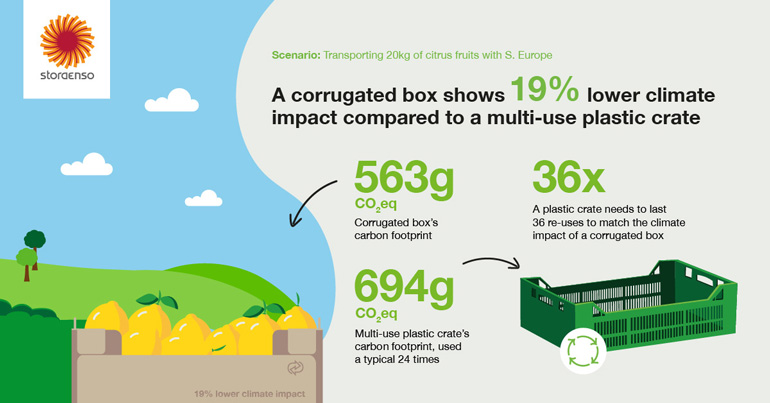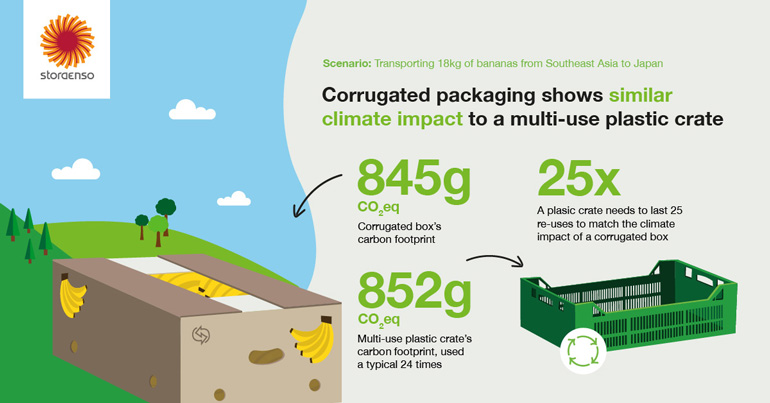Producers and sellers have high expectations for packaging reliability and at the same time seek to balance this with increasingly ambitious sustainability measures. This includes combating food waste and reducing their packaging’s environmental impact. In the fruits and vegetables category, retailers and brand owners are commonly presented with a choice between recyclable corrugated containerboard packaging and reusable plastic crates. Both offer protection, but how can they know which is the most sustainable choice?
To help our customers better understand the options and their potential environmental impacts, we recently conducted a Life Cycle Assessment (LCA) comparing corrugated containerboard box to a reusable plastic crate for transporting fresh produce. The study considers all life cycle stages including resource extraction, packaging production, transportation, and end-of-life. Below, we discuss our findings.
The study’s scenarios explained
The LCA studied the packaging types in two scenarios where loose fruit is transported in different areas: 1.) citrus transported within Southern Europe and 2.) bananas transported from Southeast Asia to Japan. In both scenarios, the corrugated box is made from two of Stora Enso’s materials produced entirely in Finland: AvantForte Brown kraftliner from our Oulu site, and AvantForte SC+ fluting from our Heinola site.
Based on interviews with plastic crate industry experts, we assumed the following about the plastic crates:
- A lifespan of 6 years and reused approximately 4 times per year
- 100% return rate
- 2.5% breakage rate
The packages were assessed across 13 common impact categories, including climate impact (i.e., carbon footprint), resource use (e.g., fossil resources, minerals, and metals), and water consumption.
For both scenarios, in each impact category, we sought to determine a break-even point; in other words, how many times the plastic crate would need to be re-used to achieve better environmental performance than containerboard?
Recyclable fiber-based vs. reusable plastic: how do they compare?
In the case of transporting 20kg of citrus fruits in a corrugated box and multiple-use plastic crate:

Regarding the case transporting 18kg of bananas from the Philippines to Japan:

The findings vary between impact categories; there are impact categories where corrugated packaging is always better in terms of impacts, e.g., water consumption, but there are also impact categories where multiple-use plastic crates show smaller impacts, e.g., land use. The learnings also show how important it is that corrugated packaging is not disposed of in landfills but recycled properly in recycling streams.
How to choose the right fiber-based product? Talk to us.
Retailers and brand owners of fresh produce demand packaging that holds up to the rigors of transportation, meets their sustainability requirements, and looks good on the shelf or floor. Retailers can take advantage of corrugated containerboard’s low climate impact and ability to protect produce while offering appealing visual features, as with AvantForte WhiteTop by Stora Enso – a three-layer, OBA-free, 100% virgin fiber kraftliner that combines printability with toughness.






